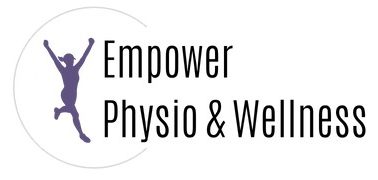*Updated 8/16/22
I’m so excited to kick off my new Ask the PT segment, where I provide direct answers to the most common questions I get from my clients, friends and family. I’ll debunk common myths, give you research-backed information to help you and offer advice to ensure you move your body in ways that are healthy for you—for years to come. Today’s topic: how to relieve headaches fast.
Nobody feels their best when they have a headache, and so many people are plagued with them. That’s why today, I’m sharing new information and offering my top 4 recommendations to find relief and prevent future headaches from happening.
Just because headaches are common, that doesn’t mean they’re normal. You don’t have to be debilitated on the regular, so let’s break down the types of headaches and what can be done for each.
Types of headaches
There are 5 main types of headaches that I frequently see in my practice.
- Tension headaches are caused by tight muscles in the head and neck. When these muscles get tight and tense, they refer pain up into the head. You may feel discomfort at the base of the head or around the temples, eyes and forehead.
- Cervicogenic headaches are simply headaches that come from your neck. They’re commonly a result of either too much or too little motion in the joints that connect the neck vertebrae to each other through discs, muscles, or ligaments. You may feel these headaches coming up the back or side of the head and into the temples, forehead, eyes, or ears.
- Migraines are a more complex type of headache and are now referred to as migraine attacks by researchers and doctors. That’s because they involve the whole body and nervous system–not just the head and are currently viewed as a neurological disorder. They’re typically associated with symptoms like nausea, light and sound sensitivity, neck pain, fatigue, mood changes, dizziness, numbness and tingling sensations. There are many different causes and triggers of migraine attacks which make the treatment very individualized.
- Food-triggered headaches occur if you have specific food sensitivities. For example, eating too much sugar can be a trigger. Typically, nothing is actually wrong in your head or neck. Rather, increased inflammation from eating sugar or foods you are sensitive to manifests as pain in your head.
- Sinus headaches result from increased pressure in the sinuses and are commonly associated with seasonal allergies, colds and sinus infections.
The best way to identify what type of headache you have is to talk with your doctor and physical therapist. When we both work together, we can identify and treat the cause of your headaches—whether it be from your neck, elsewhere in the body, or from the foods you are eating.
PTs focus on the muscles, joints, ligaments and how your body moves. This type of assessment and treatment is crucial for people who have tension-related and cervicogenic headaches. Without addressing the muscles and joints in the neck, these headaches are not likely to improve long term. And that’s the goal right? Long-term headache freedom! PTs can also help you identify lifestyle factors and breathing strategies that can improve food-triggered and sinus headaches.
Physicians on the other hand can help with migraine attacks, sinus headaches and food triggered headaches. They can prescribe medication and lifestyle changes to improve your headaches.
How to relieve headaches fast
Want to get started with something right now to help your headaches? Here are 4 quick and easy things you can implement today.
1. Suboccipital release targets the muscles that attach at the base of your head and upper part of your neck. These muscles are common culprits for tension headaches and cervicogenic headaches and when you release them, you can help reduce your pain.
How to perform:
Take two tennis balls and place them in a tube sock or pillow case. Tie a knot to keep them in place.
Lay on your back and place the tennis balls at the bottom of your head. This should be right at your hairline where the head meets the neck.
Lay here for 3-5 minutes while practicing slow belly breathing.
Check out how to perform this here.
2. Neck mobility drills improve your range of motion and can reduce pain from both tension and cervicogenic headaches. By incorporating joint movement and simple stretches, you can really start to notice a difference!
How to perform:
Sit up straight with good posture and back support.
Place a thin towel or neck scarf around the back of your neck. Cross your arms and grab each end of the towel or scarf. You will be holding the right side with your left hand and the left side with your right hand. The hand on top determines the way you will rotate your neck.
If your right hand is on top, rotate your head to the right. As you do this, pull down with your left hand and across with your right hand. Gently pull your neck into a deeper stretch. This should be pain-free and feel good.
Repeat 10-15 times, then perform the same technique rotating to the left.
Check out a video on how to perform here.
3. Diaphragmatic breathing is one of my all-time favorite techniques because optimal breathing literally affects everything else in your body for the better–headaches included. It’s great for opening the sinuses as well as improving tension headaches, cervicogenic headaches and migraine attacks. How? It calms the nervous system and activates the diaphragm. When the diaphragm is activated to control breathing, it takes strain off your neck resulting in less muscle tension and more mobility in those neck joints.
How to perform:
- Lay on your back with your knees bent up.
- Place one hand on your chest and one hand on your stomach. Breathe. You should feel the hand on your stomach rise first, then the hand on your chest should rise slightly towards the ceiling.
- Once you have the first step mastered, then you’re ready for level 2.
- Take a full breath in through your nose. This is stretching you from the inside out.
- Exhale fully through an open mouth (like you are fogging up a mirror).
- Exhale completely until you feel your side ab muscles (your obliques) turn on.
- Repeat this for 5 sets of 3 breaths.
4. Cut the sugar. I know this is a hard one, especially coming from a fellow chocolate lover however, eating sugar can cause inflammation in your body and exacerbate headaches. Pay attention the next time you eat sugar. Does your headache get worse within a few hours? If the answer is yes, choose less-sugary food options and snacks. Instead of grabbing a candy bar, lemonade, or sweet tea in the afternoon, opt for a healthy protein like eggs or nuts and wash it down with a glass of water. Then, be aware of how your head feels within a few hours after eating. You might just notice a difference! Recognizing the connection between what you eat and how you feel can be very powerful.
I hope you learned about how to relieve your headaches fast with these 4 options! Let me know how it goes and if you have more questions, let’s chat! You can contact me here, or email me directly at stephanie@empowerphysioandwellness.com.



